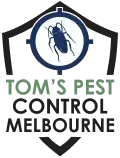Coastal brown ants, also known as big-headed ants, are a major pest ant species found in many parts of Western Australia. This species has two types of worker ants named major or soldier ants and minor workers.
These ants do not sting but may create a nuisance in your garden or home in search of food. Their diet includes a variety of things, but they prefer eating sweets and food of animal origin,
